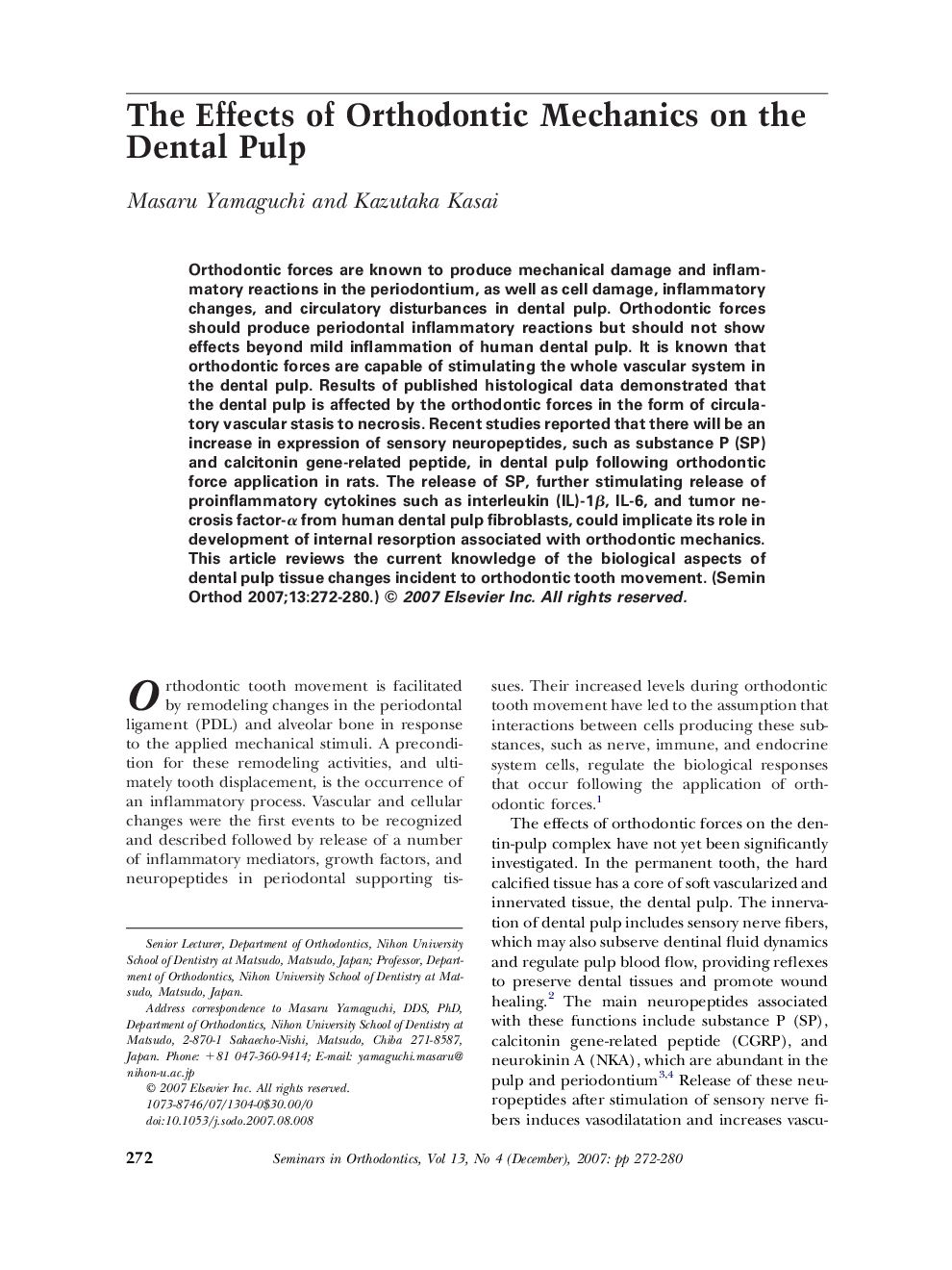| Article ID | Journal | Published Year | Pages | File Type |
|---|---|---|---|---|
| 3175766 | Seminars in Orthodontics | 2007 | 9 Pages |
Orthodontic forces are known to produce mechanical damage and inflammatory reactions in the periodontium, as well as cell damage, inflammatory changes, and circulatory disturbances in dental pulp. Orthodontic forces should produce periodontal inflammatory reactions but should not show effects beyond mild inflammation of human dental pulp. It is known that orthodontic forces are capable of stimulating the whole vascular system in the dental pulp. Results of published histological data demonstrated that the dental pulp is affected by the orthodontic forces in the form of circulatory vascular stasis to necrosis. Recent studies reported that there will be an increase in expression of sensory neuropeptides, such as substance P (SP) and calcitonin gene-related peptide, in dental pulp following orthodontic force application in rats. The release of SP, further stimulating release of proinflammatory cytokines such as interleukin (IL)-1β, IL-6, and tumor necrosis factor-α from human dental pulp fibroblasts, could implicate its role in development of internal resorption associated with orthodontic mechanics. This article reviews the current knowledge of the biological aspects of dental pulp tissue changes incident to orthodontic tooth movement.
